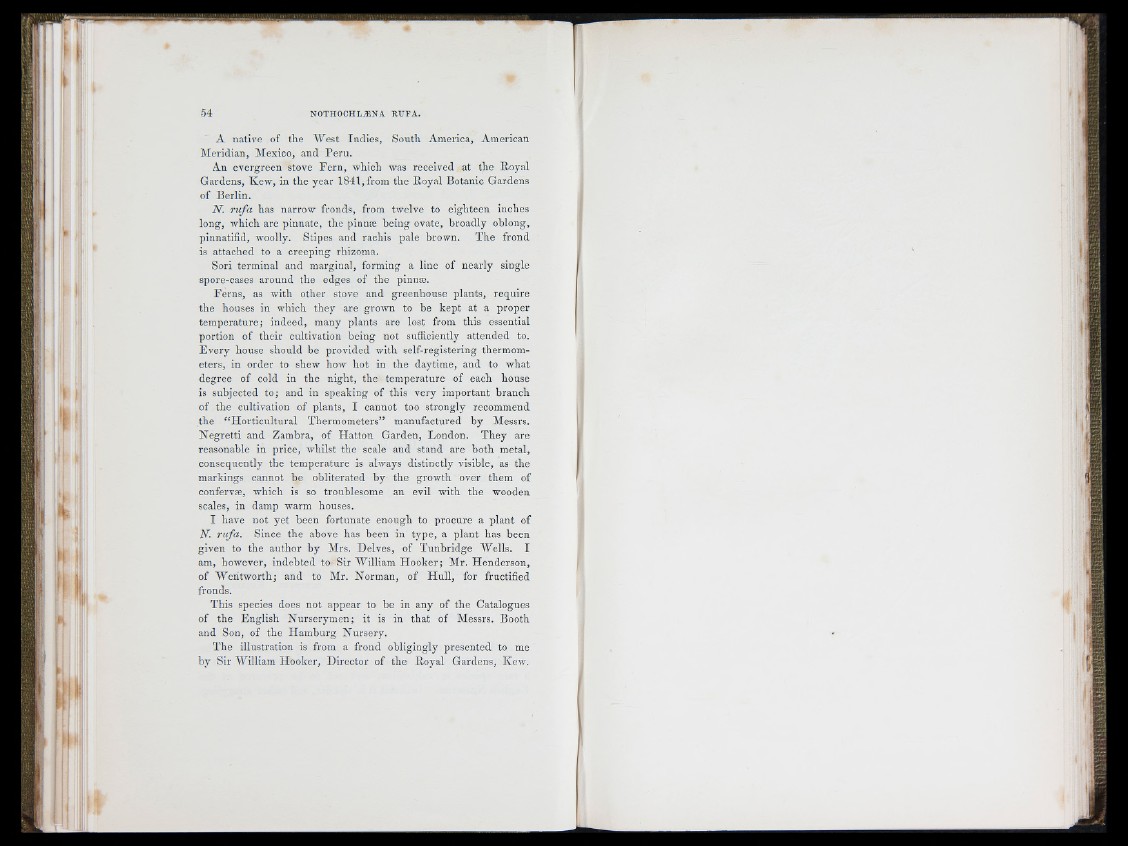
J' ' II' ‘ j
A native of the We st Indies, South America, Araorican
Me ridian, Mexico, and P e ru .
An evergreen stove P e rn , which was received at the Royal
Gardens, Kew, in the year 1841, from the Royal Botanic Gardens
of Berlin.
JV. ru fa has narrow fronds, from twelve to eighteen inches
long, which are pinnate, the pinnse being ovate, broadly oblong,
pinnatifid, woolly. Stipes and rachis pale brown. The frond
is attached to a creeping rhizoma.
Sori terminal and marginal, forming a line of nearly single
spore-cases around the edges of the pinnte.
F e rn s, as with other stove and greenhouse plants, requ ire
the houses in which they are grown to he k ep t at a proper
temperature; indeed, many plants are lost from this essential
portion of th e ir cultivation being not sufficiently attended to.
E v e ry house should be provided with self-registering thermometers,
in order to shew how h o t in the daytime, and to what
degree of cold in the night, the temperature of each house
is subjected to; and in speaking of this very important branch
of the cultivation of plants, I cannot too strongly recommend
the “ H o rticu ltu ra l Thermometers” manufactured by Messrs.
N e g re tti and Zambra, of H a tto n Garden, London. T h ey are
reasonable in price, whilst the scale and stand are both metal,
consequently the temperature is always distinctly visible, as the
markings cannot he obliterated by the growth over them of
confervie, which is so troublesome an evil with the wooden
scales, in damp warm houses.
I have n o t yet been fortunate enough to procure a plant of
N. ru fa . Since the above has been in type, a plan t has been
given to the author by Mrs. Delves, of T unbrid g e Wells. I
am, however, indeb ted to Sir William H o o k e r; Mr. Henderson,
of W en tw o rth ; and to Mr. Norman, of H u ll, for fructified
fronds.
T his species does not appear to he in any of the Catalogues
of the E ng lish N u rse rym en ; it is in th a t of Messrs. Booth
and Son, of th e H am b u rg Nursery.
T he illustration is from a frond obligingly presented to me
b y Sir William Hooker, Director of the Royal Gardens, Kew.